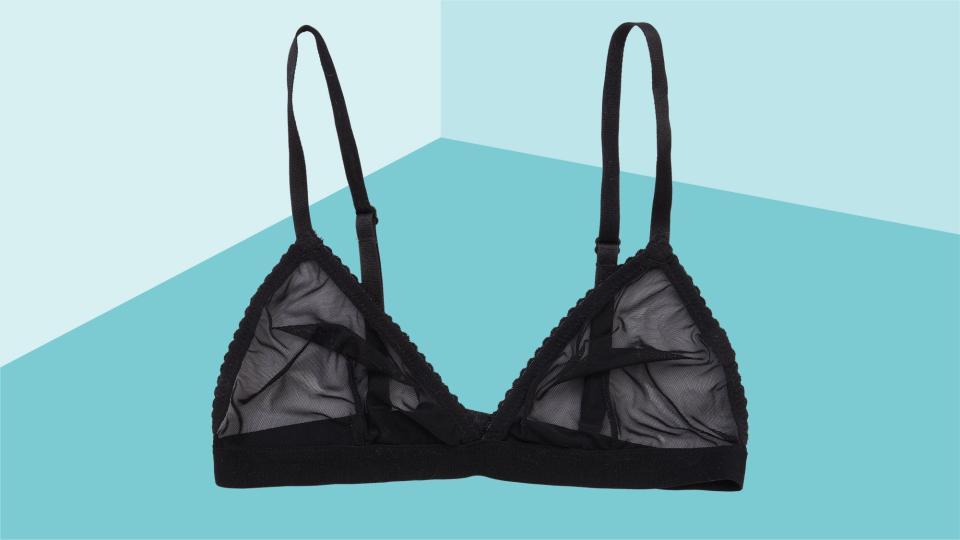What’s the Difference Between a Bralette Vs. Bra?
They’re similar, but not quite the same.

MarisaLia/Getty Images
The bralette’s been around for over 100 years, but it always took a backseat to the traditional underwire bra. Then, in the early ‘20s—largely spurred by lots of at-home time during the Coronavirus pandemic—sales of bralettes absolutely skyrocketed. In fact, reports say sales increased a whopping 40 percent.
“Bralettes were the fastest-growing segment of the bra industry,” notes Dora Lau, bra expert and founder of Dora L International. “There was a focus on comfort over conforming, and new lingerie styles—including bralettes—are focused on achieving this a new desire of comfort, style, and support.”
But what’s the difference between a traditional bra vs. bralette? And does a bralette offer enough support for your day-to-day life? We’re answering both those questions and more below.
Bra vs. Bralette
Simply put, a bralette is a wirefree bra that has minimal or no padding. Often, they’re made from soft fabrics that feel extremely comfortable, and create a more natural breast shape because they’re not as structured. Ultimately, “a bralette is for a woman looking for comfort,” notes Jené Luciani, a bra expert and author of The Bra Book.
Are Bralettes Supportive?
Generally speaking, bralettes are considered less supportive compared to a traditional wire bra or a true sports bra. Bralettes can still provide support, but how much support you get depends on the type of bralette.
“For example,” says Luciani, “A soft cup bralette with a 3-part cup—which has a seam down the front of each cup—and a wider band, or a sports bra-like bralette with a higher-spandex content, can both be very supportive.”
On the other end of the spectrum, you have thinner yoga style bras, lacy bralettes, or cami bras that are much more lightweight in nature. These bralettes tend to provide very little support or structure, but feel very comfortable to wear.
Another factor to keep in mind is breast size. Luciani says that if you’re over a C cup, then some bralettes might not feel as supportive as they would for women with smaller breasts. That doesn’t mean you can’t wear one though.
“For larger-busted women, a lot of work is done by the wire in a bra, but you can still achieve a similar level of support with a wire-free bra like a bralette,” notes Lau. “There’s a myth that a no-wire bra will flatten the chest, but new styles take the best of bralettes, sports bras, and manufacturing technologies to create a bra that provides shape and support for women who wear a larger cup size.”
If you’re larger chested and like the bralette feel but need more support, then choose a 3-part cup and wider band, and/or opt for a material that offers more structure.
When To Wear a Bralette
There are no hard-and-fast rules on when you can wear a bralette versus a bra, but often bralettes are generally reserved for low-key, casual situations when you’re not seeking breast support or structure. These are moments when it won’t matter that there’s not as much padding to conceal nipples, or scenarios when you’re not doing a ton of physical activity.
On the other hand, you may need a different bra for professional settings or events that feel a bit more dressed-up—like dinner out, meetings, or a party. And you’ll definitely want to reach for a proper sports bra when exercising since it’s designed to minimize impact on your breasts and allows you to sweat it out without worrying about discomfort or pain.
For more Real Simple news, make sure to sign up for our newsletter!
Read the original article on Real Simple.

